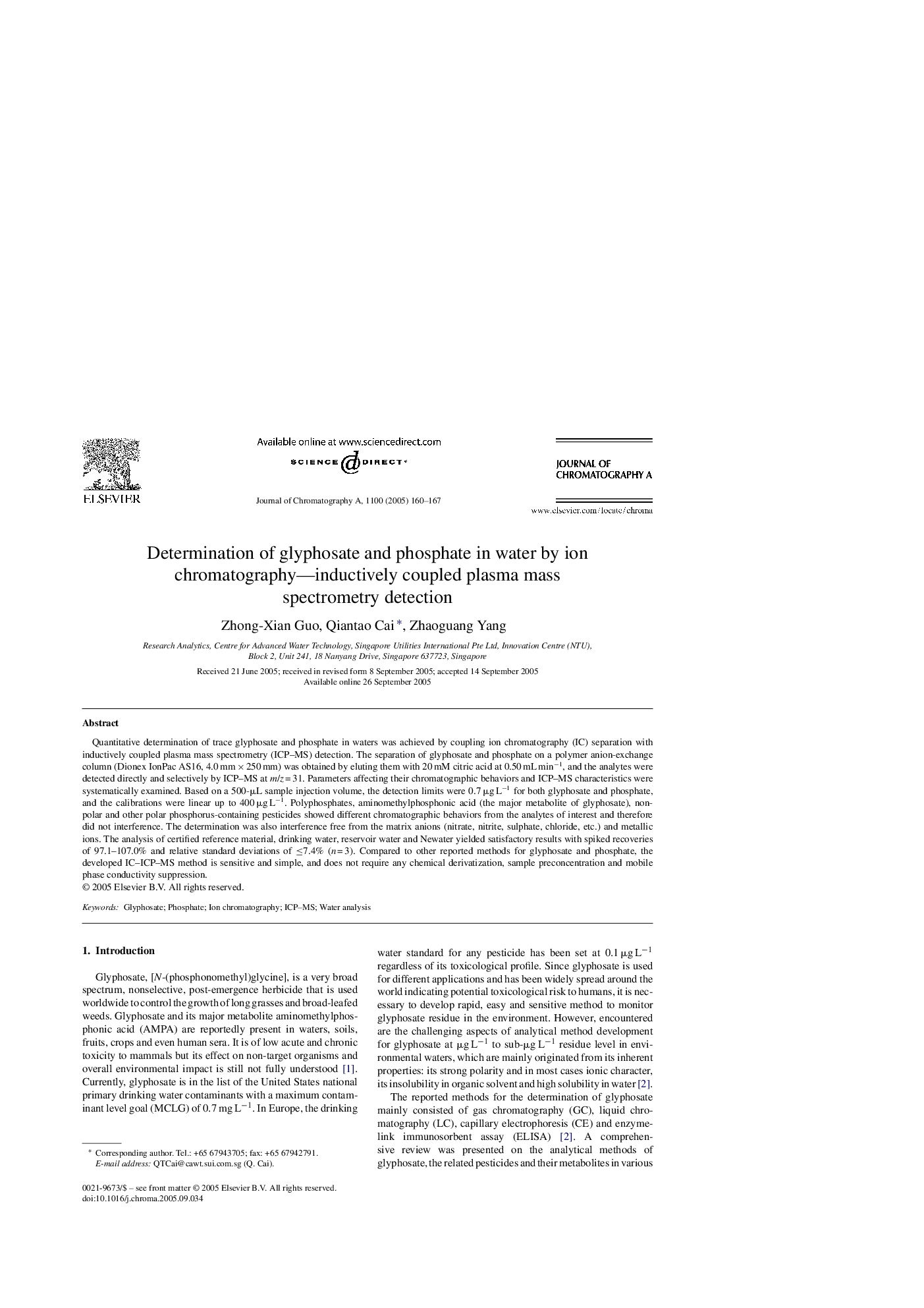| Article ID | Journal | Published Year | Pages | File Type |
|---|---|---|---|---|
| 9748443 | Journal of Chromatography A | 2005 | 8 Pages |
Abstract
Quantitative determination of trace glyphosate and phosphate in waters was achieved by coupling ion chromatography (IC) separation with inductively coupled plasma mass spectrometry (ICP-MS) detection. The separation of glyphosate and phosphate on a polymer anion-exchange column (Dionex IonPac AS16, 4.0 mm Ã 250 mm) was obtained by eluting them with 20 mM citric acid at 0.50 mL minâ1, and the analytes were detected directly and selectively by ICP-MS at m/z = 31. Parameters affecting their chromatographic behaviors and ICP-MS characteristics were systematically examined. Based on a 500-μL sample injection volume, the detection limits were 0.7 μg Lâ1 for both glyphosate and phosphate, and the calibrations were linear up to 400 μg Lâ1. Polyphosphates, aminomethylphosphonic acid (the major metabolite of glyphosate), non-polar and other polar phosphorus-containing pesticides showed different chromatographic behaviors from the analytes of interest and therefore did not interference. The determination was also interference free from the matrix anions (nitrate, nitrite, sulphate, chloride, etc.) and metallic ions. The analysis of certified reference material, drinking water, reservoir water and Newater yielded satisfactory results with spiked recoveries of 97.1-107.0% and relative standard deviations of â¤7.4% (n = 3). Compared to other reported methods for glyphosate and phosphate, the developed IC-ICP-MS method is sensitive and simple, and does not require any chemical derivatization, sample preconcentration and mobile phase conductivity suppression.
Related Topics
Physical Sciences and Engineering
Chemistry
Analytical Chemistry
Authors
Zhong-Xian Guo, Qiantao Cai, Zhaoguang Yang,
